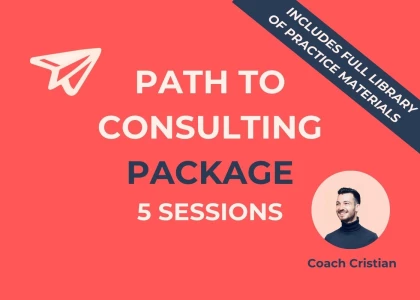Hi Guys,
I just got an invitation from Monitor Deloitte SEA for senior consultant role, and the HR told me that it will be 2x case interviews and 1x partner interview.
However, the interesting part is, in the case interviews, the interviewer will show me the case and ask me to create a quick 3-4 page slides during the meeting in 20-25mins, and then present it to the interviewer.
I never handled this type of interview before, hence I want to brainstorm with the forum:
1) What is the main objectives of this semi case interviews and deck making ?
2) What aspects that I need to be aware of?
3) What is the key resources that I need to check to learn this?


